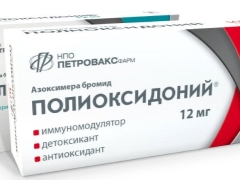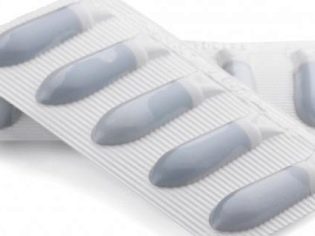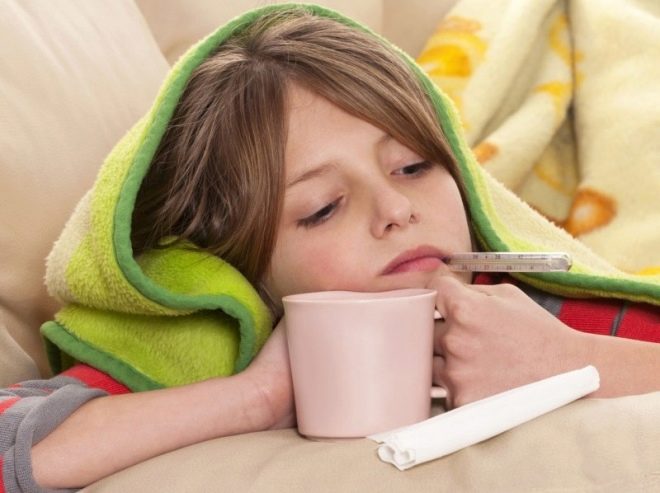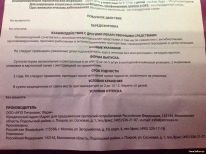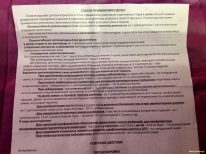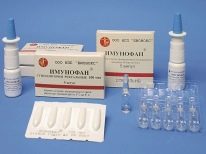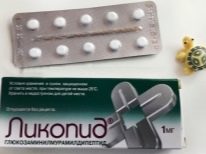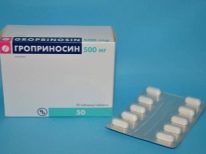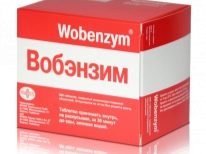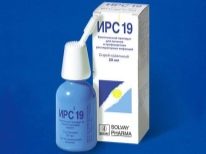Candles "Polyoxidonium" for children
Immunomodulatory drugs can be prescribed to immunocompromised children in order to speed up their recovery or prevent infections. Such drugs include Polyoxidonium, one of the forms of which are candles. Do their children write out how they affect the human body and when it helps?
Dosage form and composition
Polyoxidonium is a product of the Russian company Petrovax Farm and, in addition to suppositories, is available in two more forms - lyophilized vials and tablets.
Polyoxidonium candles are characterized by an elongated shape, light yellow color and a uniform structure. Due to the presence in the composition of cocoa butter, they have a peculiar aroma. The drug is sold in boxes of 10 suppositories, and inside the package there are two PVC blisters containing 5 candles each.
The main component of the drug, as well as other forms, is azoxymere bromide. In one suppository, it is contained in a dose of 6 mg or 12 mg. In addition to cocoa butter, two more auxiliary ingredients, mannitol and povidone K17, are added to the active substance. They help to create the desired suppository structure and prevent its damage during storage.
Operating principle
Polyoxidonium suppositories affect the children's body in a complex:
- The immunomodulating effect of the drug is associated with the ability to increase the activity of natural killer cells and phagocytes, as well as stimulate the synthesis of interferons and antibodies.
- The antioxidant properties of the drug are due to its special structure, because, due to the high molecular nature, azoxymer intercepts free radicals.
- Candles have a detoxifying effect, as they are able to block various toxins and activate their excretion.
- The drug also noted anti-inflammatory effect, because it normalizes the ratio of cytokines.
Through the use of candles, the body becomes more resistant to viral and bacterial, as well as fungal infections. In addition, the drug helps to restore immunity in secondary immunodeficiencies caused by injuries, surgery or an infectious disease.
After a candle is introduced into the intestine of azoxymere, the bromide is absorbed from it by about 70%, and after 1 hour, the concentration of this compound in the blood reaches a maximum. It affects different tissues, does not accumulate, and after conversion to low molecular weight substances leaves the body with urine.
Indications
If candles are prescribed for treatment, they are usually included in the complex therapy of several drugs. For therapeutic purposes, Polyoxidonium in this form is written out:
- in acute infectious-inflammatory diseases of different nature (caused by both bacteria and fungus or virus) and different localization;
- in chronic infections with relapses during their exacerbations;
- in the inflammatory process, which is localized in the pelvic organs, for example, cystitis or urethritis;
- with tuberculosis in different forms;
- in case of complications of an infection of an allergic disease, for example, in atopic dermatitis
- to accelerate tissue regeneration in trophic ulcers, burns or fractures;
- with complications of rheumatoid arthritis infection;
- during radiation therapy or chemotherapy of oncoprocesses.
If Polyoxidonium in candles is prescribed for prophylaxis, then You can use monotherapy (take only this drug) to prevent:
- flu infection;
- recurrence of herpetic lesions of the urinary tract;
- exacerbation of chronic infection;
- the development of ARVI during the epidemic of such diseases
- the occurrence of secondary immunodeficiency.
From what age is appointed?
In children, only candles with a dosage of 6 mg can be used. Such Polyoxidonium is allowed from 6 years of age.
If it is necessary to prescribe a drug to a younger child, for example, at 4 years or 5 years, suppositories are replaced with a lyophilisate (it is permissible to drip or prick from the age of six months) or tablets (they are discharged to children over 3 years old).
Contraindications
Polyoxidonium is not used if the child:
- revealed intolerance of azoxymere bromide or another component of the candles;
- diagnosed with acute renal failure.
If a small patient has renal failure in a chronic form, the question of treatment with Polyoxidonium is decided individually.
Side effects
Some patients after the introduction of the candle appears redness or swelling of the area around the anus or severe itching. This is how hypersensitivity to the drug is manifested, therefore, when these symptoms occur, Polyoxidonium is immediately canceled.
Instructions for use
Although suppositories are both rectal and vaginal, in childhood such Polyoxidonium is used only rectally. The candle is inserted into the rectum after a natural bowel movement or enema. A single dose for a child over six years old is one candle with 6 mg of azoxymere bromide.
Application patterns vary depending on the purpose of the appointment. The most commonly used medication daily for 10 days, that is, the course is 10 candles. Such a scheme is required for acute infectious diseases, allergies, injuries, exacerbation of urological pathologies, burns or trophic skin lesions.
This is how suppositories are prescribed in order to prevent ARVI or flu in the winter-spring period, when the epidemiological situation is unfavorable.
No less common and the scheme in which the candles put three days in a row, and then continue through the day. This course also includes 10 suppositories and is most often used to treat exacerbations of chronic foci of infection, for example, in tonsillitis.
According to a similar scheme, Polyoxidonium treats pulmonary tuberculosis, but the entire course includes 20 suppositories, and after it is completed, the medication can be prescribed to maintain 1 suppository 2 times a week for 2-3 months.
If a child has rheumatoid arthritis complicated by an infection, then suppositories put 10 candles a day later. The same 20-day regimen is also used to prevent exacerbations of chronic infectious diseases or herpes.
Patients who are assigned to treatment of cancer, begin to enter Polyoxidonium 1 candle 2-3 days before the start of chemotherapy or radiation therapy, and then use the drug 2 times a week. The entire course is usually 10 candles.
Overdose and drug interactions
Excess Polyoxidonium Dose candle light does not happen, since several suppositories are not used at the same time. As for compatibility with other drugs, the manufacturer notes the possibility of combining Polyoxidonium with many other drugs, including antibiotics, antihistamines or antiviral drugs.
Terms of sale and storage
Candle polyoxidonium is a non-prescription drug, therefore it is freely sold in many pharmacies. On average, one pack of suppositories costs 850-900 rubles.
The shelf life of the drug is marked on the box and is 2 years. Store candles at home in a cool place at a temperature of + 2 + 15 degrees Celsius.
Reviews
On the use of suppositories in childhood, doctors and parents speak mostly positively.Among the advantages of such polyoxidonium, immunologists have noted a wide range of applications and safety for the child’s body.
Moms confirm that the therapeutic effect from the use of this drug is manifested very quickly, and the main disadvantage is the high price of the drug.
Analogs
Other drugs that have a similar effect on immunity can be replaced by Polyoxidonium, for example:
- Imunofan. Such candles are allowed from 2 years of age and are used for the prevention and treatment of secondary immunodeficiencies, including in the treatment of cancer pathologies.
- Groprinosin. These inosine-based pranobex tablets have immunomodulatory and antiviral effects. They are prescribed to children older than 3 years.
- Lycopid. This medication in tablets is used for chronic infections, for example, for herpes, as well as for the prevention of SARS. At a dosage of 1 mg, it is prescribed from the age of 3 years.
- Imunofan. This drug is prescribed for children with viral diseases and immunodeficiency. It comes in the form of a solution for injections, spray in the nose and candles. Most often, children are prescribed rectal suppositories that are allowed from the age of two.
- Wobenzym. This medication is used for atopic dermatitis, rheumatoid arthritis, fractures, pyelonephritis, burns and in many other cases. It is produced in coated tablets and prescribed to children over 5 years old.
- Galavit. This tool is recommended for children with furunculosis, sore throats, frequent acute respiratory viral infections, burns, adenoiditis, chronic otitis and other pathologies. In candles, Galavit is allowed from 6 years of age.
- IRS-19. This nasal spray includes lysates of bacteria and is in demand in the treatment of rhinitis, adenoiditis, tonsillitis and other respiratory tract pathologies. In children, it is used from 3 months of age.
Reviews of the doctor on the drug Polyoxidonium: group, indications, use and side effects, see the next video.
